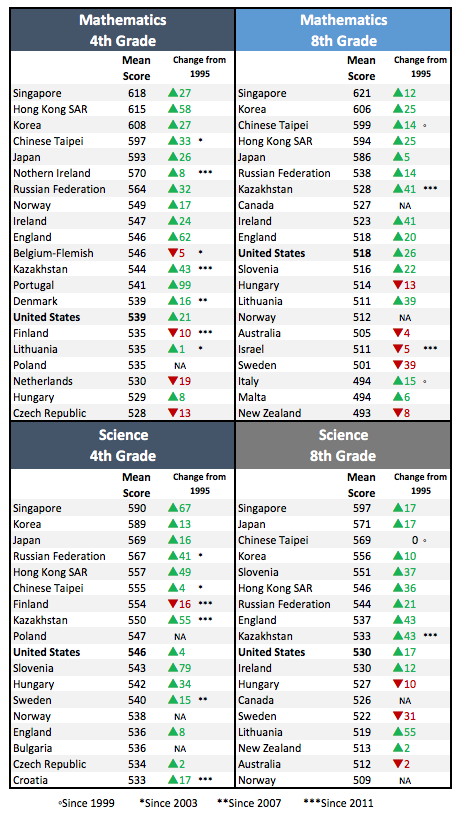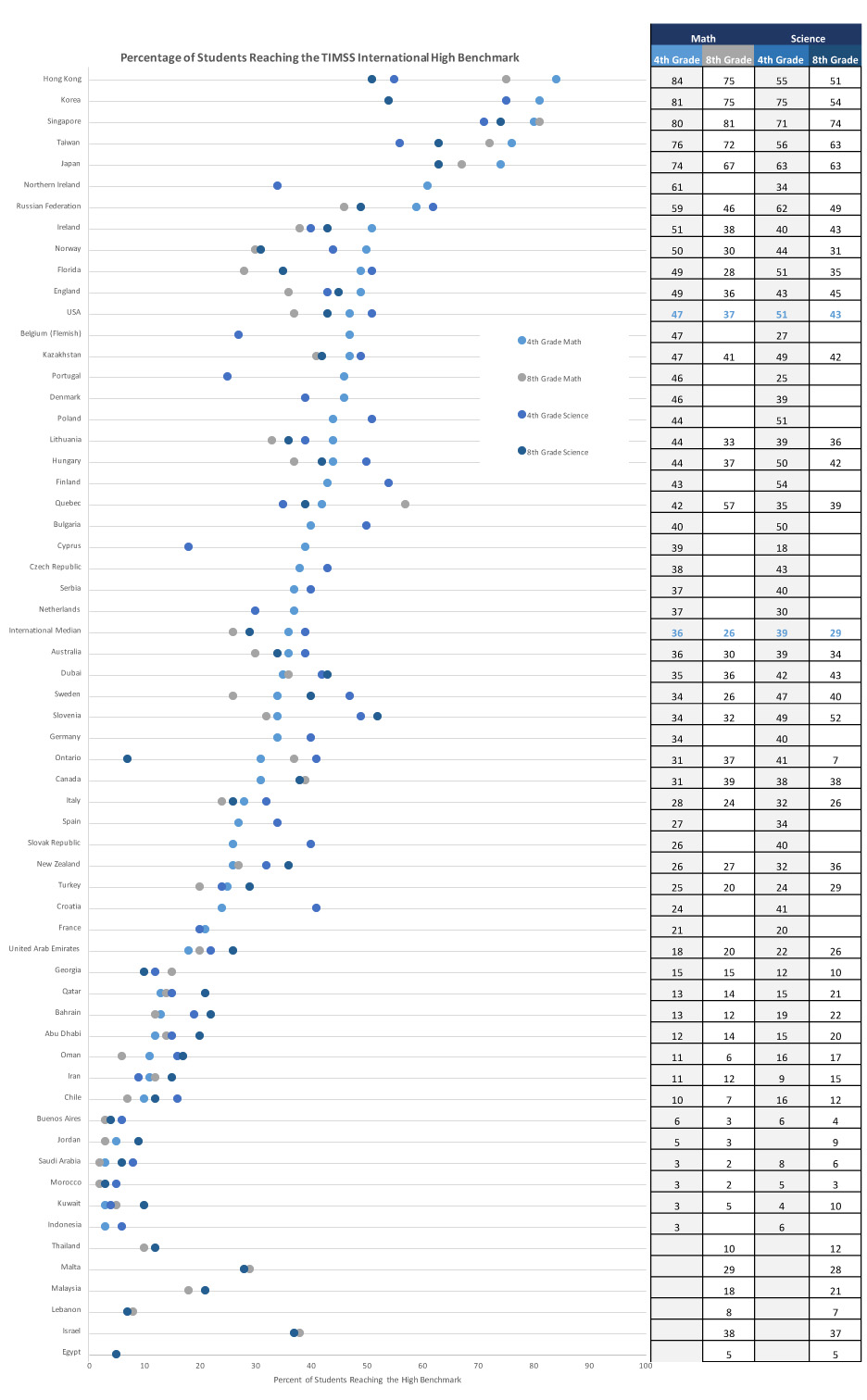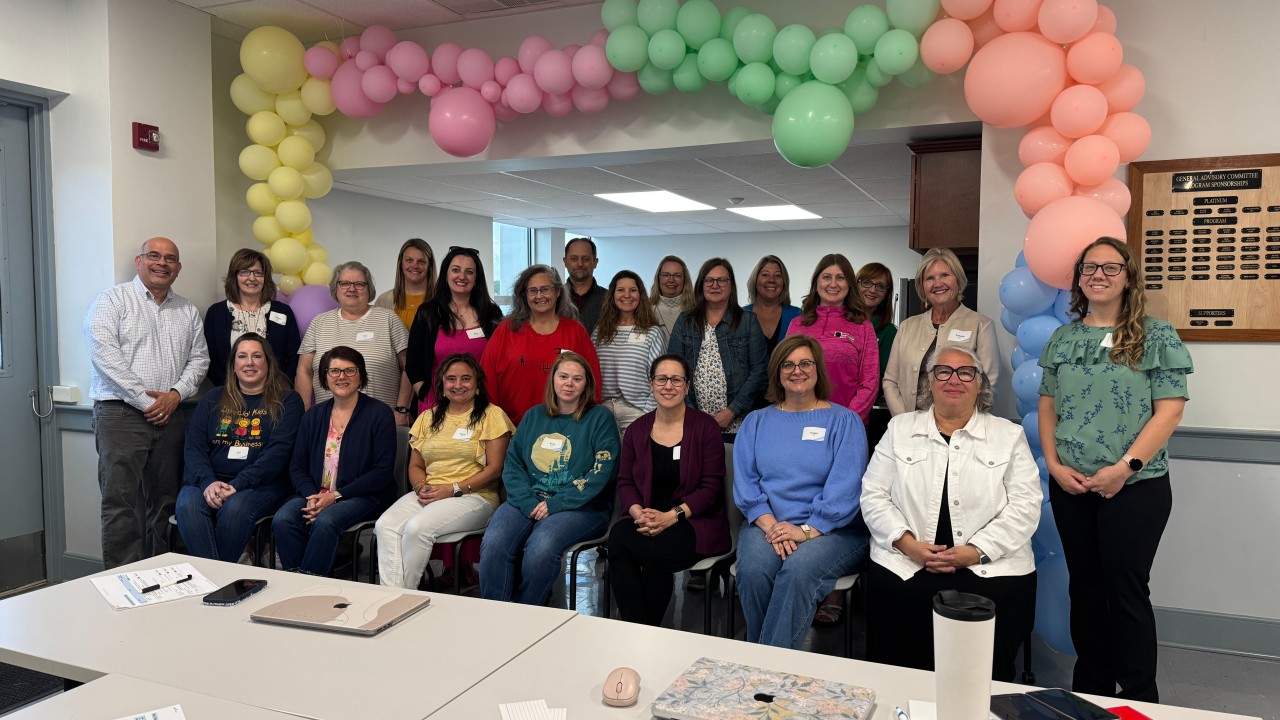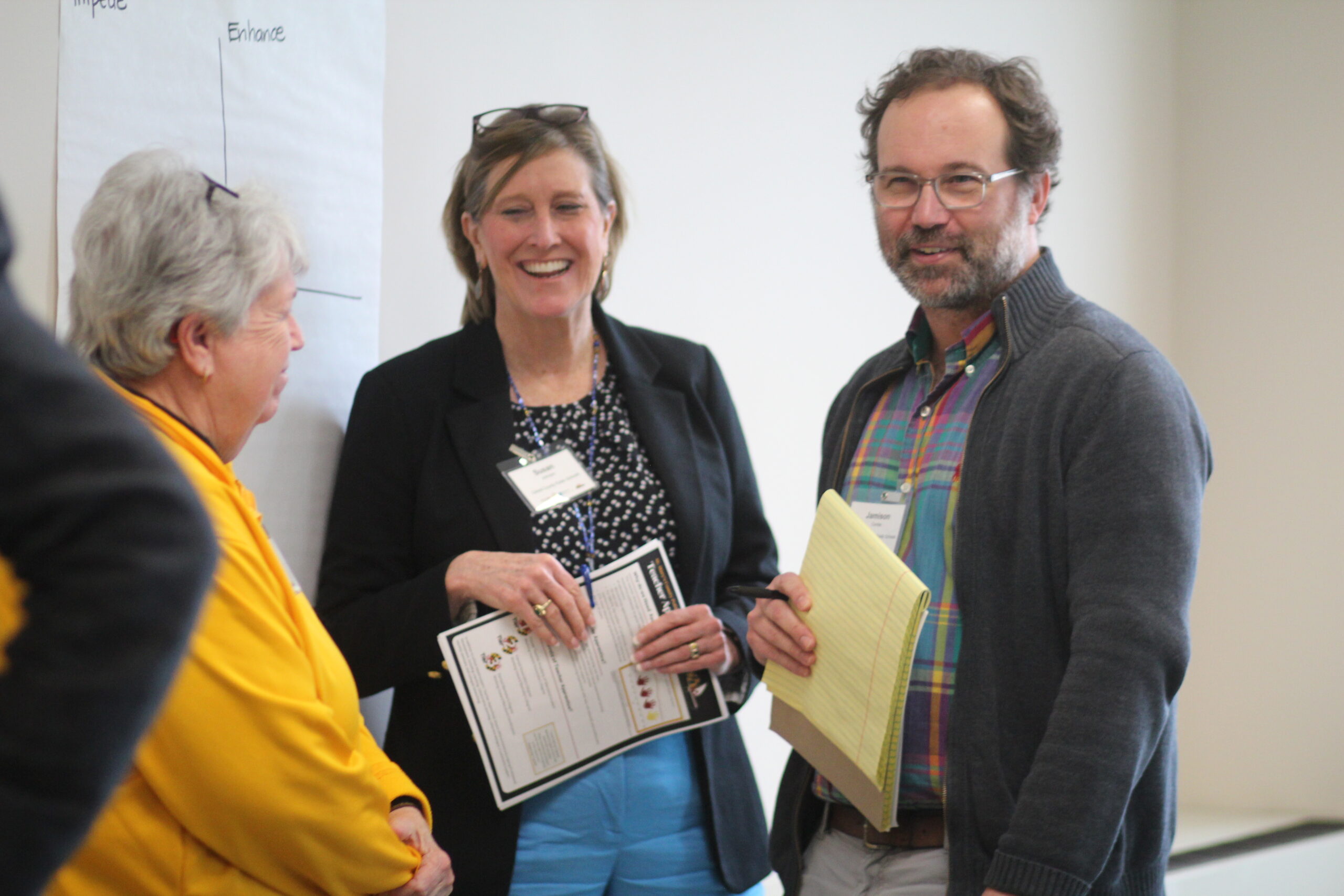The results of the 2015 Trends in International Mathematics and Science Study (TIMSS), released on November 29, show that U.S. students, despite some gains, continue to struggle, especially compared with their peers from high-performing nations.
In fourth grade mathematics, U.S. students performed below those in 10 jurisdictions, and outperformed those in 34 jurisdictions—many of which are developing economies. The top performers were Singapore, Hong Kong, South Korea and Japan. The average score was unchanged since 2011, but fourth graders improved significantly since 1995. U.S. eighth graders performed below those in eight jurisdictions and outperformed those in 24 jurisdictions. The top performers were Singapore, South Korea, and Taiwan. Eighth graders improved their performance since 2011, but the improvement was driven by the highest performers—those at the 75th and 90th percentiles. Poorer performers made no gains.
In science, U.S. fourth graders were outperformed by those in seven jurisdictions and outperformed those in 38. Singapore and South Korea topped the charts. The U.S. average score was unchanged since 2011 and at the same level as in 1995. U.S. eighth graders were outperformed by those in seven jurisdictions and outperformed those in 26 with Singapore, Japan, and Taiwan as top performers. The U.S. average score was unchanged since 2011 but significantly higher than in 1995.
According to the International Association for the Evaluation of Educational Achievement, which administers TIMSS, in eighth grade science, 20 scale points are equivalent to a school year’s achievement. That means that eighth graders in Singapore, which had an average scale score of 597, are more than three years ahead of eighth graders in the U.S. in science.

TIMSS and PISA
TIMSS is one of two major international assessments of mathematics and science. Results from the other assessment, the Programme for International Student Assessment (PISA), which also tests students in reading literacy, will be released on December 6.
TIMSS and PISA differ in significant ways. TIMSS tests students in grade 4 and 8 and measures their knowledge of the curriculum. PISA tests 15-year-olds and measures whether they can apply their knowledge to solve real-world problems. Thus it assesses whether students at the end of secondary school can use what they know.
The countries that participate in the assessments also differ. Some countries that are high performers on PISA, such as Shanghai, Finland, and Estonia, did not take part in TIMSS. And TIMSS includes a number of developing nations, such as Iran and Morocco, that did not participate in PISA and are low performers.
Learning from Top Performers
The top performers on TIMSS not only have high average performance; they also have a high percentage of students who reach the top levels on the assessment and thus can demonstrate a high level of ability. Students at the “high” level in eighth grade mathematics, for example, can apply their knowledge and understanding in a variety of relatively complex situations. Eighty percent of Singapore’s eighth graders reached that benchmark, compared with 37 percent of U.S. students, and 50 percent of Singapore eighth graders reached the “advanced” level, indicating that they can apply and reason in a variety of situations, solve linear equations, and make generalizations. Ten percent of U.S. eighth graders reached that benchmark.
The top performers have developed and implemented education systems that include policies that produce high performance for all or nearly all students. More information about these policies, in NCEE’s Blueprint: Designing Systems That Work.





